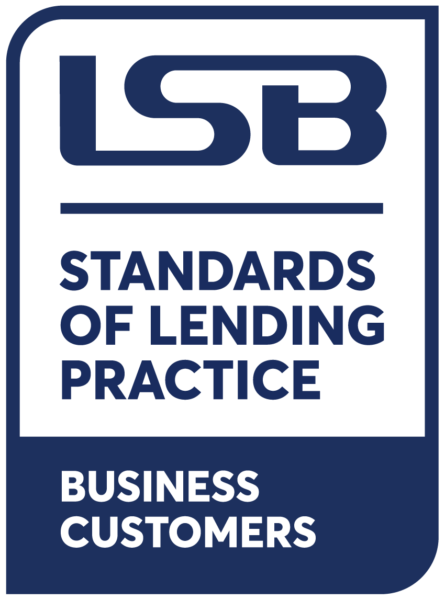The Standards for business customers
The Standards of Lending Practice for business customers provide protections for SMEs with a consolidated turnover of up to £25 million across loan, commercial mortgage, overdraft and credit card products.
The business Standards were formally recognised by the Financial Conduct Authority (FCA) in 2020. Behaviour in line with an FCA recognised Code indicates a person subject to the Senior Managers & Certification Regime is meeting their obligation to observe ‘proper standards of market conduct’ in relation to unregulated activities.
The outcomes focussed Standards which apply across digital, branch and telephony networks used by firms to deliver products and services to SMEs, cover the following areas:
- Product information
- Product sale
- Declined applications
- Product execution
- Credit monitoring
- Treatment of customers in financial difficulty
- Business support units
- Portfolio management
- Customers in vulnerable circumstances
- Governance and oversight
Below are the overarching principles that Registered Firms which lend, and/or undertake associated debt collection activities, to business customers should use to govern their relationship with them.
The Principles for Lending and Standards of Lending Practice apply to:
- Overdraft, loan (excluding trade loans), credit card and chargecard products.
- Registered Firms and any third parties that retail and service the lending products listed above on behalf of a Registered Firm.
Registered firms will ensure that their business customers:
a. Are told about the products the Firm has to offer and provided with clear information to enable them to choose a product that meets their needs.
b. Are provided with information about how to apply for the different products a Firm offers; what the application process entails and any other requirements a Firm may have.
c. Are aware of the high level basis on which the Firm will make its decision to lend to them. If the customer’s application is declined the primary reason for this will be provided.
d. Are aware that they have the right to appeal a Firm’s decision to decline their application and, where appropriate, have the option to be referred to alternative sources of finance.
e. Will be provided with clear and understandable documentation which sets out their obligations under their agreement with the Firm.
f. Are aware of the options open to them if they anticipate, or a Firm becomes aware, that they will have or are experiencing difficulty in repaying their borrowing.
g. Will know what happens when they have repaid their borrowing or no longer require it.
Customer outcome:
all product information presented to business customers will be clear, fair and not misleading and enable the customer to understand the key features of the product, such as the interest rates, fees and charges that apply.
Firms will achieve this:
with systems and controls at product design, financial promotion and product review stages that assess product performance and ensure product information is clear, fair and not misleading.
- Firms should ensure that all financial promotions, across all channels, are clear, fair and not misleading. Where relevant, this also includes material provided to comparison websites.
- Firms should ensure that employees/agents are trained and knowledgeable about the range of products, across all channels, on offer to customers.
- Firms should ensure that customers are provided with clear and understandable information which enables them to decide whether the product they are considering applying for meets their needs and is appropriate for the type of business they are engaged in.
- Firms should ensure that the customer’s consent is sought prior to sharing any business or personal details with a third party or an alternative source of finance. [DPA]
- Firms should ensure that clear information is provided as to how the product on offer works: its key features and the associated costs for example, charges, interest and any breakage or early repayment fees/costs.
Customer outcome:
business customers will only be provided with a product that is deemed affordable and which meets the requirements of the business.
Firms will achieve this:
with systems and controls that ensure the sales process, training and incentives promote the right behaviours and direct their employees, or their agents, to deliver the right customer outcome.
- Firms should ensure that customers are provided with clear guidance on the information and documentation they will need to submit during the application process.
- Firms should inform the customer of the likely time it will take for a lending decision to be made. Following receipt of the required completed documentation, Firms should ensure that customers are kept informed of the progress of their application.
- Where applicable, customers are informed that checks may be made at Credit Reference Agencies and that information may also be provided to Credit Reference Agencies during the life of the borrowing.
- Before providing any form of credit, granting a limit or increasing the customer’s borrowing, Firms should assess, from the information available at the time, whether the customer will be able to repay it in a sustainable manner without incurring financial difficulty.
- If a Firm offers a product which includes an indicative quotation facility, it should provide the customer with clear information as to what this is, and that any quotation provided will be linked to the customer’s financial circumstances.
- Firms providing a credit card product should present information about the main features of a credit card in summary box form, where appropriate.
- At the point of sale, Firms should provide clear information to the customer regarding the key features of a product and any breakage or early repayment fees/costs associated with it. This information should be made available to the customer upon request, throughout the lifetime of the borrowing.
- Firms should inform the customer if any security, for example, a guarantee/debenture/indemnity, is required to support the borrowing or other liabilities and the reason why. The level of security required by the Firm should be appropriate to the amount borrowed.
- Firms should ensure that the customer is provided with clear information on the circumstances under which the security will be released. The security should not be relied upon beyond the life of the borrowing.
- Firms should confirm the conditions of any facility in writing and recommend that the customer seeks independent advice before accepting the facility.
- Firms should ensure that customers are kept informed of the estimated timescales which may apply to the issuing of facility letters or for obtaining any security that may be required to support the borrowing.
- Before a customer accepts the facility, Firms should agree with the customer as to what form of monitoring information they will require about the business’ performance and how often this will be required.
- If an individual or a business agrees to be a guarantor or to provide an indemnity, the Firm should make the individual/business aware of their obligations under the agreement and that they have the option to seek legal advice, should they wish to do so.
- Firms should not accept unlimited guarantees from an individual/business unless it is to support a customer’s liabilities under a merchant agreement[2]; however other forms of unlimited third party security may be taken, if available.
[2] A contract between a business and a credit card service provider.
Customer outcome:
business customers whose applications are declined are provided with the right of appeal and are aware of the alternative sources of finance available.
Firms will achieve this:
with systems and controls that promote the right behaviours to ensure that their employees, or their agents, are able to treat declined business customers fairly and appropriately.
- If an application for a product is declined, the Firm should ensure that it understands the reason(s) behind it in order to be able to convey, where appropriate, this information to the customer. As a minimum, the customer should be provided with the primary reason in writing as to why they have been declined.
- If the application was declined due to information obtained from a Credit Reference Agency search, firms should either:
- apply the requirements of s157 of the Consumer Credit Act for relevant customers; or
- provide the customer with the names of the Credit Reference Agencies used by the firm.
- Firms should inform the customer of their right of appeal and have fair and effective processes in place to review a decision to decline an application. These should, as a minimum, reflect the Lending Appeals process.
- Firms may, where appropriate, signpost a declined customer to alternative sources of finance or third party. The customer should be made aware that the signposting is not an indication that any subsequent application would be successful
- Firms who are designated banks under the Small and Medium Sized Business (Finance Platforms) Regulations 2015 should offer a customer declined for finance the opportunity for their details to be referred to government designated finance platforms.
Customer outcome:
information provided to business customers will be clear in terms of presentation and in clarifying any action that the customer needs to take. Business customer requests will be dealt with in a timely, secure and accurate manner.
Firms will achieve this:
with systems, processes and controls that aim to provide an accurate view of the customer’s relationship with the Firm and the relevant lending products they hold. This should be underpinned by appropriately skilled and knowledgeable staff.
- If a customer has been provided with product that has a promotional feature, the customer should be notified of its expiry date/withdrawal in a clear and timely manner and how this will impact, where relevant, upon the costs associated with using the product.
- Where a Firm offers a fixed rate lending product, clear information should be provided to the customer on any breakage costs associated with the product and how this will be calculated. The customer should have access to this information during the period of the borrowing.
- Firms should provide customers with written notice of any change in interest rates or charges. This requirement does not apply where the increase relates to a published rate, for example, base rate or other benchmark.
- Where a customers’ borrowing is linked to an interest rate benchmark and this will be transitioned to an alternative rate, firms should ensure that customers are provided with timely notification of when this change will become effective.
- Firms should have processes in place to deal with unauthorised credit card transactions. If customer fraud is suspected, the burden of proof is on the Firm to prove this is the case.
- Firms will maintain the security of customers’ data but may share information about the day-to-day running of a customer’s account(s), including positive data, with credit reference agencies where the Firm has agreed to follow the principles of reciprocity.
- Firms should ensure that where an individual provides a guarantee/indemnity or other security, they are able to request information regarding their current level of liability, as long as the customer gives their permission and confidentiality is not breached.
- Firms should comply with the customer’s request to co-operate with their professional adviser(s) during the lifetime of the relationship. All communication with the customer/their adviser will be undertaken in a clear and open manner.
- Firms should ensure that any changes to the terms of the customer’s agreement are fair and transparent. The customer should be provided with clear information regarding the reason for the changes and provided with a reasonable amount of time to seek further clarification, or where appropriate, alternative sources of finance.
- Where a change is made to the relationship management process which will impact on the customer, Firms should provide the customer with advance notice, and the reason for the change. Where this will require action from the customer, they should be allowed sufficient time to complete this, taking into account the channel currently used.
- Firms should comply with a customer’s request to have access to the basic information held by the Firm about their products/accounts. The request should be dealt with in a timely and efficient manner.
- Firms should ensure that requests for a Deed of Priority[3] or Waiver are dealt with quickly and efficiently, in line with the BBA protocol.
- Firms should contact personal guarantors on a regular basis to confirm the information held about the guarantor; and to provide a reminder that the guarantee remains current.[4]
[3] Known as a Ranking Arrangement in Scotland.
[4] This provision is effective from 8 September 2025.
Customer outcome:
business customers will be supported by pro-active and reactive measures designed to identify signs of financial stress. [4]
Firms will achieve this:
with systems and controls that are capable of identifying, across the relevant products held, where customers may be showing signs of financial stress at any point in the customer life-cycle, and pro-actively engaging with the customer to agree an appropriate solution.
- Firms should ensure that the customer understands what information will be required to allow the Firm to monitor the business’ performance and how and when this should be provided.
- Firms should provide customers with the ability to opt-out of any unsolicited increase in their borrowing limit(s).
- Firms should ensure that a sufficient level of monitoring, underpinned by appropriate triggers and processes, of a customer’s borrowing is undertaken to help determine if the customer is exhibiting signs of financial stress. Where relevant, firms should engage with these customers in a sensitive and supportive manner.
- Where appropriate, Firms should initiate a timely review of the customer’s re-financing needs and an assessment of what needs to be in place ahead of any term loan expiry to maximise the prospect of successful re-financing.
- Firms should ensure that relevant customer facing employees and relevant third parties are sufficiently trained and skilled to help them to identify and deal with those customers who may be showing signs of financial stress.
- Firms should undertake monitoring and assurance work to ensure that their policies and processes are designed and are operating effectively in identifying and supporting customers who are showing signs of financial stress.
[4] The customer has not yet defaulted but information available to the Firm suggests that the business may be showing signs of being in financial difficulty.
Customer outcome:
business customers in financial difficulty, or in the early stages of the collections process, will receive appropriate support and fair treatment, in order to help them deal with their debt(s) in the most suitable way.
Firms will achieve this:
with systems and controls that are capable of identifying and, subsequently, supporting business customers in financial difficulty. Firms should be able to demonstrate that a sympathetic and positive approach has been applied when considering a customer’s financial situation.
This section focuses on the treatment of businesses in financial difficulty and includes a dedicated section on business support units.
The LSB recognises that not all firms have business support units in place and where there are, there isn’t one model which is applied consistently across registered firms. Customers may move in and out of financial difficulty/business support units during the course of their relationship with the firm. For ease of reference, a separate set of Standards for business support units can be found below. However, firms will apply a consistent approach to the treatment of businesses in financial difficulty, regardless of where responsibility for the relationship with the customer sits within the firm.
- Firms should have triggers and processes in place to help identify customers who may be in financial difficulty and should act promptly and efficiently to address the situation with the customer.
- Firms should have appropriate policies and procedures in place to identify and support vulnerable individuals where this impacts on the customer’s ability to pay.
- Customers identified as being in financial difficulty should be contacted and provided with clear information setting out the support available to them, the next steps and where relevant, with any action they are required to take. They should not be subject to harassment or undue pressure when discussing their financial situation.
- Firms should demonstrate an empathetic approach to the customer’s situation; listening to and acting upon information provided by the customer with a view to developing an appropriate and mutually acceptable solution.
- Firms should apply an appropriate level of forbearance where, if after having made contact with the customer, it is clear that this would be appropriate for their situation. Firms should ensure that the solution offered does not exacerbate the customer’s situation.
- If a Firm is aware that a customer is, or suspects that they are, in financial difficulty but is able to uphold their borrowing commitments to the Firm, the customer should be given the opportunity to take action to turnaround the business.
- Firms should guide the customer to appropriate advice which reflects their circumstances and level of borrowing. Where appropriate and available, the customer will be signposted to a third party offering free, impartial debt advice.
Customer outcome:
customers transferred to business support units will receive appropriate treatment and support and, where practicable, will be returned to mainstream banking.
Firms will achieve this:
with transparent processes and procedures, working openly and constructively with customers with a focus on returning the business to viability in a timely and cost-effective manner.
- Firms should ensure that appropriate governance arrangements are in place to safeguard against conflicts of interest in relation to the functions of the business support unit and the mainstream bank.
- Firms should have a criterion in place for the consideration of the referral of a customer to a business support unit and for the subsequent assessment of viability.
- Firms should ensure that appropriate policies and procedures are in place to ensure that staff are trained and supported to deliver good turnaround practice.
- Firms should provide clear communications to customers to enable them to understand why they have been transferred to a business support unit, the firm’s concerns and the proposed next steps.
- Firms should keep the need for business support unit involvement under continuous review and customers should be aware of the processes the firm has in place for returning viable businesses to mainstream banking.
- Firms should support a customer’s turnaround plan where the firm has assessed the business to be viable. Firms should ensure that where a turnaround plan is agreed with the customer, the terms of the support are documented.
- If a firm is unable to support a turnaround plan, the customer should be notified of the reasons why and given a reasonable period of time to consider the options open to them.
- Firms should ensure that customers are provided with clear information on the range and type of fees and charges which may be applicable, and when these will be applied.
- Firms should ensure that fees and margins applied take into account the customer’s financial circumstances and their ability to pay. These should be discussed and agreed with the customer.
- Firms should ensure that the rationale for pricing decisions is documented and validated. It should take into account the customer’s circumstances and the impact this may have on the scope for successful turnaround.
- Where valuations are required, firms should ensure that the customer is provided with clear information regarding the purpose of the valuation and whether there are any costs associated with it.
Customer outcome:
when debts are sold, impacted business customers will be treated fairly and all communications regarding the sale, and what this means for the customer, will be transparent and provided in good time. Where the firm is aware that a business customer is suffering from mental health or critical illness, the customer’s debt will not be sold.
Firms will achieve this:
with systems and controls to ensure that only eligible business customers are transferred to a third party and appropriate due diligence is undertaken on the Firm before a sale, which demonstrates that the customer will be treated fairly.
Unless otherwise stated, the following Standards apply to the sale of performing and non-performing debt. The following Standards apply to the sale of debt at the portfolio level.
- Firms should follow a robust due diligence process when selecting third parties for debt sale or debt collection activities to ensure that customers will continue to be treated fairly, in line with the requirements of the Standards of Lending Practice and the relevant contractual terms.
- Firms should ensure that where the decision is made to sell a customer’s debt and the contractual terms require the customer’s consent to do so, this is obtained prior to any sale taking place.
- Where an agreement allows for a Firm to sell a customer’s debt without their consent, Firms should ensure that:
a. the customer is provided with reasonable notice that the Firm intends to sell their debt and provided with clear information as to what the sale means for the product(s) that they hold with the Firm and;
b. if the relationship with the customer will be serviced by the third party, full contact details for the purchaser are provided. - If an individual[5] has provided appropriate and relevant notification of an ongoing mental health or critical illness that affects the customer’s ability to repay their debts, or the Firm is aware the individual is terminally ill, the debt(s) should not be sold.
- If a Firm sells non-performing debt, it should take appropriate and reasonable steps to ensure that the third party, to whom the customer’s debt has been sold, deals with the customer in a manner that is consistent with the relevant requirements of the Standards of Lending Practice and the relevant contractual terms.
- Where a debt is sold and during the lifetime of the original agreement[6], a dispute arises between the customer and the third party which the parties are unable to resolve, Firms should ensure that they have processes in place to allow the customer access to the Firm’s complaints procedure.
[5] A person who, when taking into account information available to the Firm about how the business is structured and operates, is able to exert significant control over the way in which it is run.
[6] Subject to industry practice on the retention of personal data under the Data Protection Act 1998.
Customer outcome:
inclusive products and services take into account the broad range of business customers to which they may apply and contain appropriate flexibility to meet the needs of customers who may be, or are in, a vulnerable situation. Where customers are identified as, or the Firm has reason to believe that they may be, vulnerable, appropriate adjustments are made to ensure that their individual circumstances are accommodated to enable the customer, or their authorised third party, to manage their account(s).
Firms will achieve this:
with systems and controls that are capable of assisting in the identification of customers who are, or may be, in a vulnerable situation, and having appropriate measures, training, referral points and skilled staff to deal appropriately with the customer once identified.
The following Standards have been drafted to support Firms in identifying and addressing situations where an individual within a business either is, or the Firm has reason to suspect that they may be, vulnerable. These Standards can be applied to a sole trader, partnership or to an individual within a limited company. The impact of the individual’s vulnerability on the business customer’s relationship with their Registered Firm will depend on a number of non-exhaustive factors such as: the legal structure of the business, its sophistication, the role and level of responsibility of the individual within it and the extent of the individual’s vulnerability. Firms will be at different stages of developing an approach to business customers and vulnerability and the applicability of the following standards will depend on the individual circumstances of the person.
- Reference to an individual means a person who, when taking into account information available to the Firm about the how the business is structured and operates, is able to exert significant control over the way in which it is run.
- Reference to vulnerability is in relation to the individual rather than the business itself, for example, a business in financial difficulty would not necessarily be considered to be vulnerable for the purposes of these Standards.
- Firms should have a vulnerability strategy, which defines its approach to the identification and treatment of individuals considered to be vulnerable, through whichever channel the customer chooses to engage.
- Firms should undertake monitoring and assurance work to ensure that the vulnerability policies, processes and controls are designed and operating effectively and delivering fair customer outcomes.
- Firms should have policies and processes governing the identification and fair treatment of individuals in vulnerable circumstances. These should take into account: the channel, where the individual is within the customer journey and the varying nature and degrees of permanence of different vulnerabilities.
- a. Firms should ensure that their employees and their agents are sufficiently trained to help them to identify vulnerability and deal with the individual in accordance with their policies and processes, with appropriate escalation points, where the circumstances require this.
b. When an individual is identified as potentially vulnerable, a Firm should ensure that its employees or its agents have appropriate referral and escalation points and are aware of how to access them. - Where appropriate, Firms should develop triggers and management information to assist employees in the identification and subsequent monitoring of individuals who may be vulnerable.
- Where a Firm is developing a new product, or reviewing an existing product, it should consider vulnerability as part of the design or review process, paying regard to target market, clarity, accessibility and the operation of the product.
- Firms’ sales policies and processes should take account of the impact vulnerability may have on an individual’s ability to make an informed decision about a product and provide relevant support during the application process.
Customer outcome:
business customers will receive a fair outcome when taking out a credit product and throughout the whole customer lifecycle, wherever the interaction with the customer takes place.
Download the Information for Practitioners
Registered firms only.
Why register? or Sign in
Firms will achieve this:
with processes, controls and governance arrangements that ensure that there is effective senior management oversight of the Firm’s achievement of the customer outcomes contained in the Standards of Lending Practice for business customers.
- Firms should have adequate governance, policies, processes, management information and controls to enable effective oversight of adherence to standards and delivery of fair customer outcomes.
- Firms should have an effective risk management framework appropriate to the size of the Firm to ensure that the Standards of Lending Practice are achieved.
- Firms should ensure that their employees and their agents are adequately trained to deliver the Standards of Lending Practice’s customer outcomes, and that any incentive schemes are driving the right behaviours to ensure fair customer outcomes.
- Firms should have systems in place to ensure that the Firms’ employees and agents are promoting products in a clear and transparent way.
- Firms should have systems in place to ensure that any failure to adhere to the Standards of Lending Practice are identified and assessed for materiality and root cause. Where the materiality threshold is met, these are reported to the LSB and remediated in a timely manner.
- Firms should have processes in place to identify when changes to the Standards of Lending Practice are made and to ensure that these are effectively incorporated within policies, processes and systems.
- Firms should ensure that when systems or processes are changed, or products are introduced or changed, the impact on meeting the Standards of Lending Practice is adequately assessed.
- Firms should ensure that the product design stage takes into account internal and external risks which could impact upon a customer’s ability to maintain their repayments so that new products do not lead to unsustainable borrowing.
- Firms should undertake both post-launch and cyclical product reviews to ensure that their products are, and remain, fit for purpose.
- Further to the requirements of paragraph 1, portfolio management, firms should:
a. on an annual basis, notify the LSB of any portfolio debt sales made to the firm’s panel of approved purchasers during the previous 12 months.
b. following the onboarding of a new third party onto the firm’s panel of approved purchasers, notify the LSB of the name of the third party and provide confirmation that appropriate due diligence has been undertaken in line with paragraph 1, portfolio management.
c. where the intention is to sell a portfolio of debt to a third party which is not on the firm’s panel of approved purchasers, the firm should provide advance notice to the LSB of the proposed debt sale and the name of the third party. - Where part of the credit process/life cycle is outsourced, Firms should:
a. undertake effective and robust due diligence in selecting a third party to ensure that it can meet the Standards of Lending Practice and deliver the required customer outcomes; and
b. exercise effective ongoing oversight of the third party to ensure that it is meeting the Standards of Lending Practice and delivering the required customer outcomes. - Firms should have a robust complaints management process in place to deal with Standards of Lending Practice-related complaints and to undertake root cause analysis [DISP].
- Firms should assign an appropriately skilled and senior individual(s) with clear accountability for overseeing that the Standards of Lending Practice are being adhered to and customer outcomes achieved, and for ensuring that remedial action is instigated where this is not happening.
Registered firms log in to access DCO letters and other resources
Registered firms only.
Why register? or Sign in









